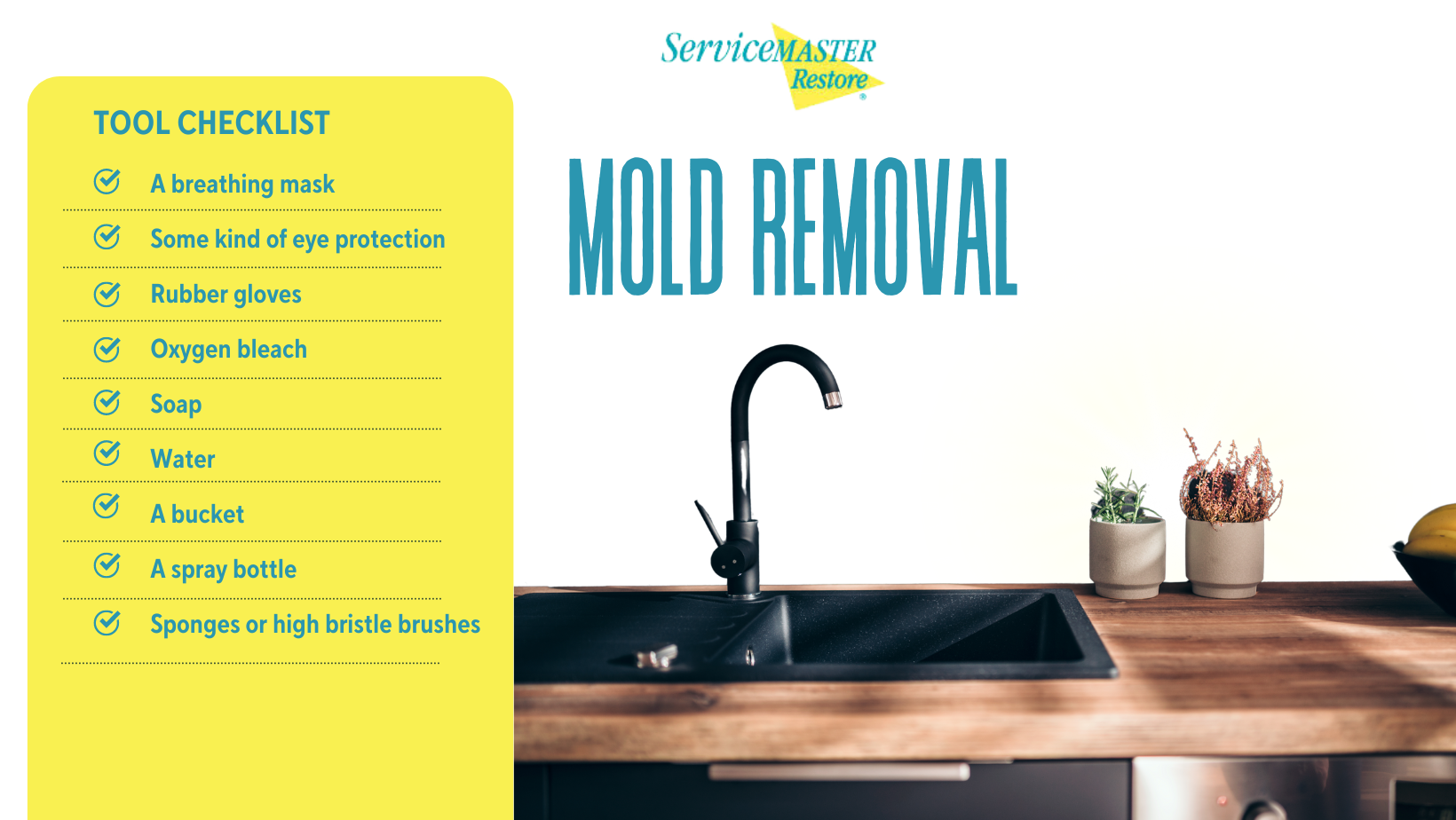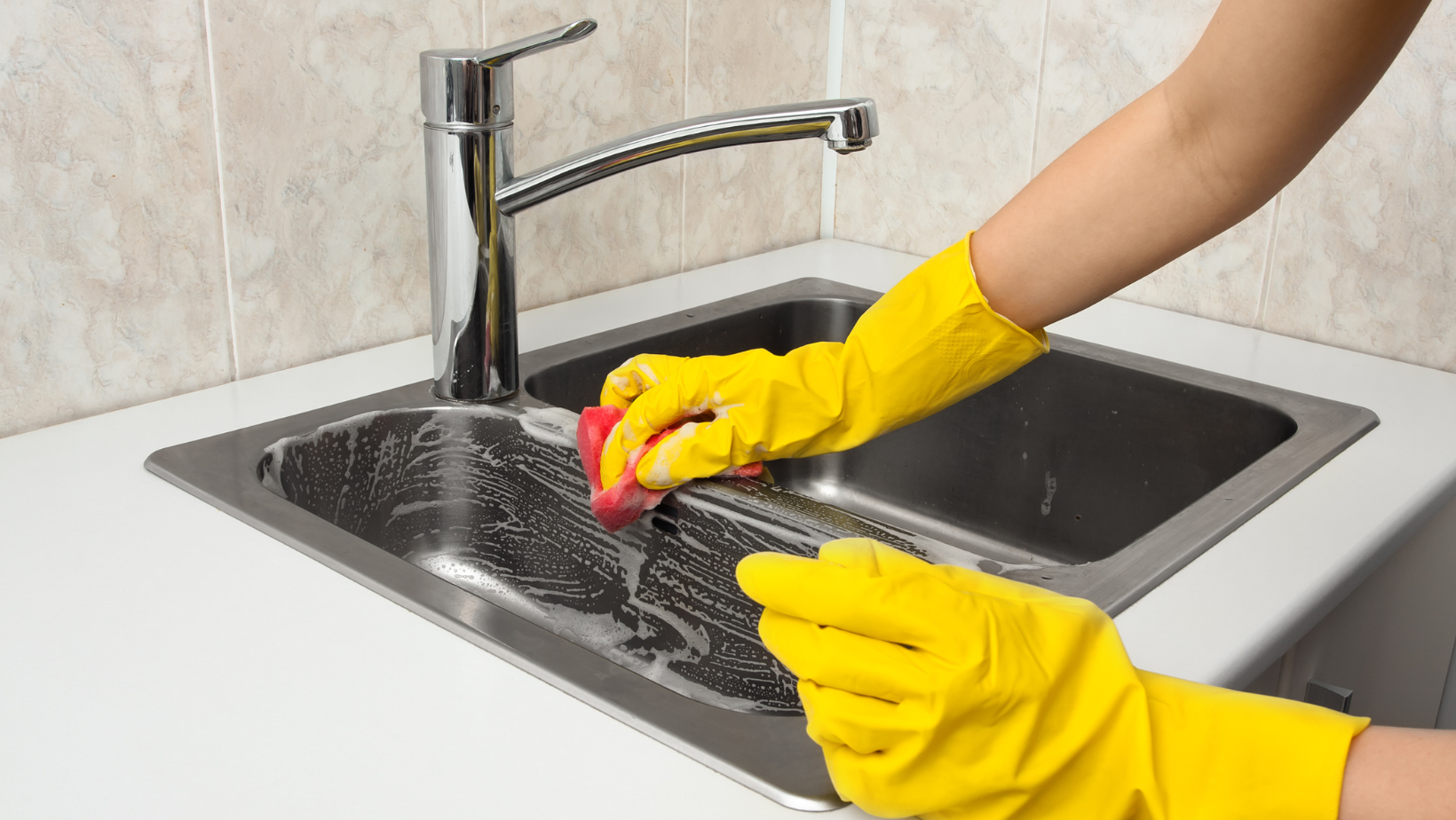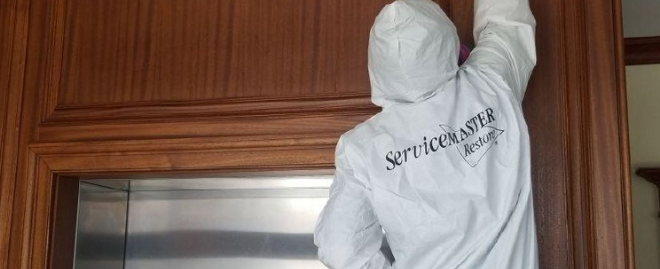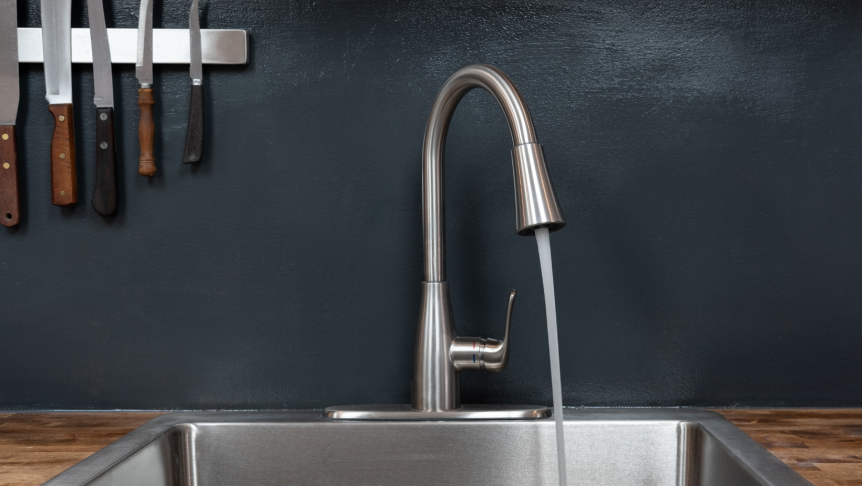Dealing with mold in the kitchen sink can be both stressful and challenging to tackle on your own. If you discover black mold under your sink, it’s crucial to address it promptly, as it poses a health risk and can cause serious damage. Ignoring mold allows it to grow and spread which only increases the risk of damage and potential health effects.
Typically, you won’t need to remove the kitchen cabinets to address the mold problem. Instead, you can clean the affected area and implement measures to prevent future growth.
Steps to Remove Mold from Under Your Sink

Promptly addressing mold under your sink is essential upon its discovery. Before beginning the remediation process, gather all necessary tools and equipment to ensure quick and efficient removal. Here is a list of items you’ll need:
- A breathing mask
- Some kind of eye protection
- Rubber gloves
- Oxygen bleach
- Soap
- Water
- A bucket
- A spray bottle
- Sponges or high bristle brushes
If you decide to use bleach for cleaning mold and have stainless steel under your kitchen sink, it’s important to use oxygen bleach. Mix one part bleach with four parts water. Be aware that bleach can discolor surfaces beneath the sink, so if you’re concerned about this, consider alternative cleaners.
Natural cleaning options, such as vinegar, tea tree oil, or grapeseed extract, offer anti-microbial properties that help eliminate mold odors and disinfect the area.
To begin cleaning, prepare a spray bottle with your chosen cleaning solution and fill a bucket with soapy water. Then follow these steps to effectively clean mold:
Inspect the Area First

While wearing protective gear, inspect the area infested with mold. Always put on rubber gloves before touching any mold-covered object. Most molds found in homes are not toxic, but if you encounter a large area with black mold, it’s crucial to call professionals for removal. Toxic mold is typically greenish and poses health risks. Make you’re wearing enough clothing to prevent mold spores from contacting your skin. After inspecting the infested area, remove items from under your sink and place them in a sealed plastic bag.
Once you reach the moldy area, compare your findings with online images to try and identify the type of mold and its toxicity. If uncertain, obtain a testing kit from a local hardware store. After confirming it’s safe to handle the mold yourself, proceed with the following steps:
Cleaning the Mold

Cleaning mold can be tricky because improper cleaning methods can make the mold worse and put your health at risk. Make sure to follow the methods below when cleaning the mold so you do not end up spreading it further:
- Spray the infested area with a cleaning solution using a spray bottle. This will help wet the area and prevent the mold spores from getting into the air.
- When you’ve sprayed the area, let it sit for one hour so that the solution can kill the mold.
- Simply use a sponge to clean the area. Once you are done waiting, just use a sponge or a rag dipped in soapy water and clean off any leftover mold. Finally, rinse the rag or the sponge so you do not end up spreading mold.
- Once the cleaning is done, you need to dry the area. Make sure that any materials that are used to clean the area are sealed in a plastic bag and disposed of. The cabinet doors should be left open so the area can dry for at least one hour and then you can put them back below the sink.
How to Prevent Mold in the Future
Once the mold has been removed from under your kitchen sink, it is important to figure out what caused it in the first place so you can fix the issue and prevent mold growth in the future. Here are some things you can do to prevent mold under your kitchen sink:
- The main issue that causes mold around the kitchen sink is a leak in the pipes, so make sure to have any leaks fixed right away to prevent future issues. You can also consider a kitchen sink replacement.
- Purchase a mold inhibitor solution so you can add it to paint or other solution. You can apply some of this mold inhibitor under the sink where you may get mold growth over time.
- To prevent mold in your home, make sure to keep the humidity below 40%. You can use an air conditioner or a dehumidifier to keep the humidity of your home at the proper levels.
- Always inspect the area under the sink so that you can easily notice a moisture leak or a mold issue right away. If the mold growth comes back, you will need to contact a professional mold removal company to fix the issue.
Professional Mold Removal

The area under your kitchen sink is vulnerable to mold growth due to the presence of moisture and poor ventilation. It is important to check this area regularly for signs of mold growth and to take the proper steps to have it removed. Finding and addressing mold growth under your kitchen sink quickly can help limit the damage and save costs on mold remediation. If the amount of mold under your sink is too much for you to handle safely, you can call our professionals at ServiceMaster DRR for help.
At ServiceMaster DRR, we provide comprehensive mold remediation services for homeowners and businesses in San Francisco, CA, and the nearby areas. Whether mold is lurking under your sink or elsewhere on your property, we have the expertise to remove it with advanced tools, effective methods, and specialized equipment and ensure that your property is restored to its original condition.
For all of your mold remediation service needs, call ServiceMaster DRR in San Francisco, CA, at (415) 584-6100.

Steve VanDenBerg is the owner of ServiceMaster Disaster Restoration and Recovery. He has over 30 years of experience working within the restoration industry and successfully leading start-ups, turnarounds, acquisitions and mergers, and rapidly growing companies.
Steve earned his BS in Business & Accounting from Calvin University in Grand Rapids, MI and began working for DSI Holdings as their Chief Financial Officer. When Steve began with DSI Holdings, they were running an underperforming ServiceMaster Restore franchise with one location. Steve implemented new policies and procedures for accounting and finance as well as a professional sales plan that increased profits eightfold over his time as the CFO. He was then promoted to President and CEO and in this time, he expanded the company from two locations with $4M in sales to 12 locations and $45M in sales. DSI Holdings became one of the largest disaster restoration companies in the U.S. and helped with major restoration projects throughout the U.S. and around the world.
Steve purchased ServiceMaster DRR in 2015 when the business was in decline. Drawing on his years of experience in turning around struggling ServiceMaster franchises, Steve overhauled our operations, including finance, sales, and marketing, which led to a quick turnaround. Within Steve’s first 24 months, sales increased by 60 percent. Steve also helped greatly improve our operating margins and established a relationship with California’s largest residential insurance company. Under Steve’s leadership, we have become one of the largest disaster restoration providers in California.
Steve has found great success in turning around struggling and stagnant restoration franchises by changing the business model and strategy, greatly increasing sales and profits. Many of the changes he has implemented have even been adopted by the franchisor into their operating model.



